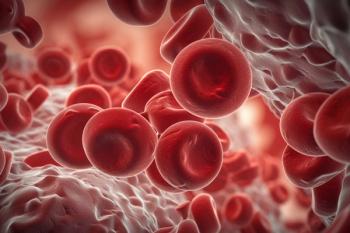
Clinical
Latest News
Latest Videos

CME Content
More News

Ruben A. Mesa, MD, president and executive director of Atrium Health Levine Cancer Institute and Atrium Health Wake Forest Baptist Comprehensive Cancer Center, discusses how value-based care teams can collaborate to ensure diversity and inclusion in clinical trials.

For patients with advanced non–small cell lung cancer (NSCLC), regardless of PD-L1 status, cemiplimab plus chemotherapy had favorable survival benefits and patient-reported outcomes over chemotherapy alone.

Among 10 patients evaluated, compared with their baseline at 1 week after receiving their final dose in the trial, 30% demonstrated clinical improvement on the Alzheimer’s disease composite score.

Positive data from the phase 3 EV-302 trial of enfortumab vedotin with pembrolizumab in locally advanced or metastatic urothelial cancer have shifted the landscape.

Consumers should not eat precut cantaloupe if they do not know the source, as the number of illnesses and recalls tied to a deadly salmonella outbreak grows; the White House and the Department of Education urged schools to take proactive steps to prevent youth drug use; a study published this week found a high prevalence of arrhythmia in patients with long COVID.

Considerations for growth factor and stem cell transplant for patients with MDS is discussed.

Dr Haumschild leads a discussion surrounding the latest advancements in treatment algorithms for myelodysplastic syndrome.

Guru Sonpavde, MD, medical director of genitourinary oncology at the AdventHealth Cancer Institute, discussed the promising findings of the CheckMate 901 trial exploring the potential of nivolumab plus gemcitabine-cisplatin in advanced urothelial carcinoma.

The mean projection of patients' emotions and dyspnea was more optimistic than what was eventually observed.

Pretreatment vitamin D levels were associated with endoscopic improvement in patients with ulcerative colitis and decreased C-reactive protein levels in patients with Crohn disease.

Bimekizumab-bkzx (Bimzelx) is the first dual interleukin 17A (IL-17A) and interleukin 17F (IL-17F) inhibitor to treat moderate-to-severe plaque psoriasis. It launches with a list price of $7200 per syringe.

A real-world study suggests high-dose chemotherapy followed by autologous stem cell transplantation (ASCT) is feasible for appropriately selected elderly patients, with similar results seen in older and younger patients.

Adverse reactions and challenges with patient adherence to therapy are explored by dry eye disease experts.

Jai G. Parekh, MD, MBA; and Alexander Kabiri, OD; explore the current treatment landscape of dry eye disease.

High Bone Morphogenetic Protein 7 (BMP7) expression was significantly associated with aggressive phenotypes, including advanced grade, International Federation of Gynecology and Obstetrics stage, residual disease, and adverse overall survival.

ChatGPT is changing health care while also raising questions about artificial intelligence's promises and limitations; 24 Biden officials met with the National Organization of Black Law Enforcement Executives to discuss the FDA’s proposal to ban menthol cigarettes; a recent hospital cyberattack shows how the vulnerability of health care systems can put patients at risk.

Investigators from several medical centers in Japan were surprised to find that women with myelodysplastic syndrome (MDS) had a survival advantage from a 7-day dosing schedule, but that benefit compared with a reduced schedule was not seen in men.

In this podcast, a trio of experts discuss precision medicine in non–small cell lung cancer (NSCLC), current immunotherapies, and more.

Financial considerations associated with heart failure management are dissected.

Barriers to optimal heart failure treatment are broken down by the expert panelists.

At present, it is difficult for clinicians to identify patients at greatest risk for developing preeclampsia with severe features and tailor treatment plans for them; this difficulty increases costs significantly.

Researchers identified a value of at least 0.25 to be a minimal clinically important difference (MCID) in diabetes distress, and MCID values of 0.38 and 0.39 for emotional and interpersonal distress subscales and physician and regimen distress subscales, respectively.

Provisional CDC data show that US babies gained roughly a year in life expectancy in 2022; study findings indicate that the COVID-19 pandemic significantly raised the risk of preterm birth for expectant California mothers; New York Attorney General Letitia James said about 4 million New Yorkers were affected by a data breach of the medical transcription company Perry Johnson & Associates.

Patients with diabetic macular edema could be treated with brolucizumab with as much effectiveness as aflibercept.

Professionals explore the importance of indication-specific data in gastroenterology.














































